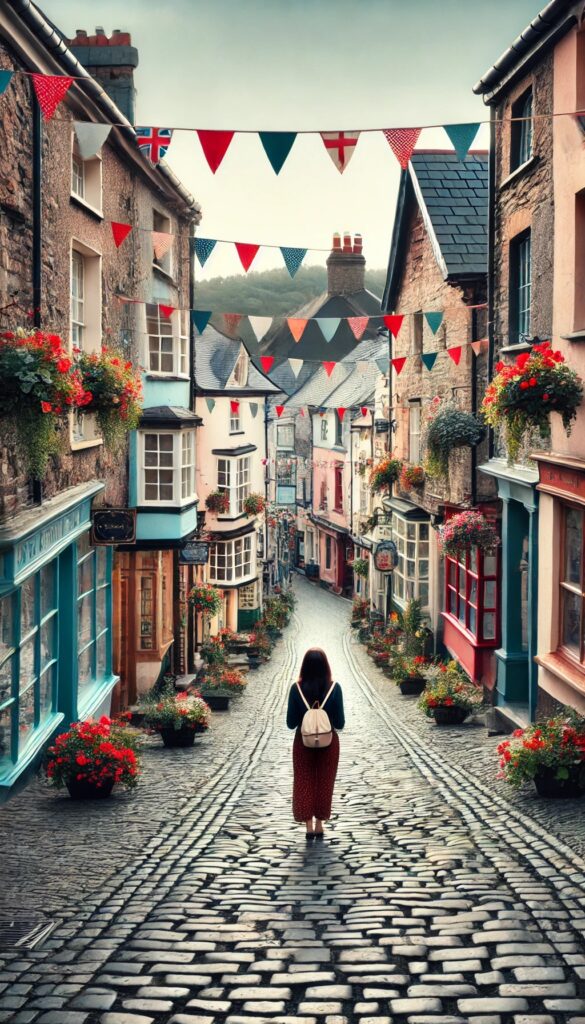ChatGPT:
Lincoln, England, is a historic city in the East Midlands, known for its rich heritage and impressive architecture. The city’s most iconic landmark is Lincoln Cathedral, a stunning example of Gothic architecture that once held the title of the tallest building in the world. Nearby, Lincoln Castle, built by William the Conqueror in the 11th century, houses one of the surviving original copies of the Magna Carta.
Lincoln’s historic quarter, known as Bailgate, features charming cobbled streets, independent shops, and a mix of restaurants and traditional pubs. A particularly well-known street is Steep Hill, aptly named for its incline, which is lined with quaint shops and cafés. The University of Lincoln also contributes to the city’s lively atmosphere.
The Brayford Waterfront area, with its modern restaurants and bars along the marina, contrasts with the historic charm of the uphill area, giving Lincoln a blend of old and new.
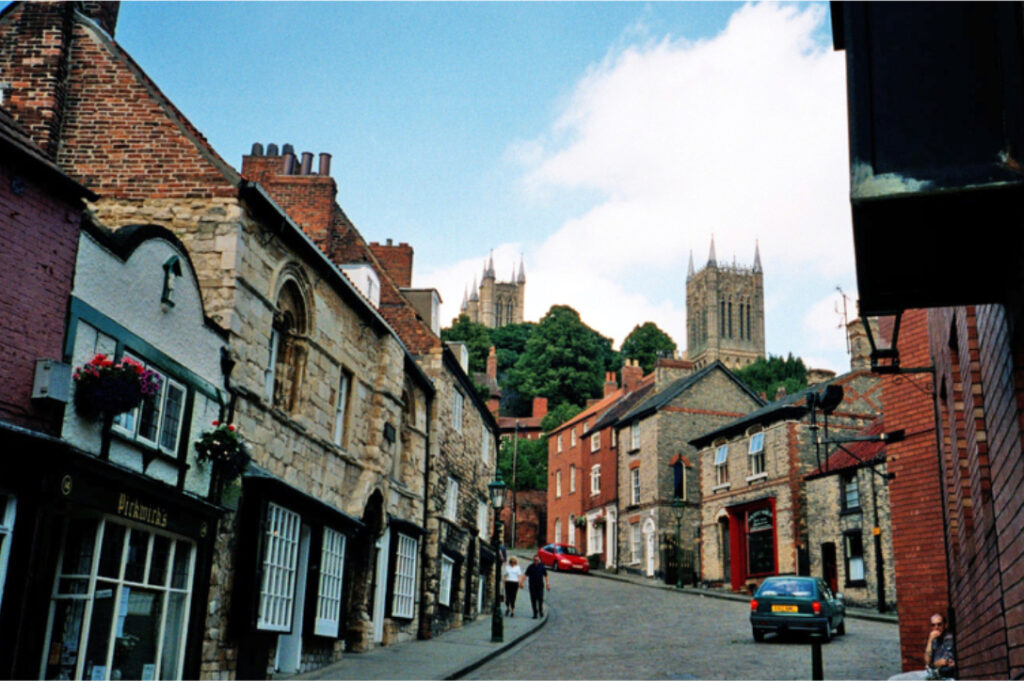
Origin:
Lincoln’s origins date back to around the Iron Age when a settlement was established by the Celtic Corieltauvi tribe. The Romans arrived in the 1st century AD, recognizing the site’s strategic importance due to its location on a hill by the River Witham. They established a fort and named the settlement “Lindum Colonia.” The location made Lincoln a significant Roman town, particularly as a center for retired soldiers and later as part of the road network between London and York.
History and Development:
- Roman Era:
Lincoln became an important Roman colony, and during this period, key infrastructure such as roads, a forum, and public baths were developed. The Roman city wall and gate structures added to its prominence, establishing Lincoln as a regional hub of Roman Britain. - Anglo-Saxon and Viking Periods:
After the Roman departure in the 5th century, Lincoln experienced a decline but revived under Anglo-Saxon rule, becoming part of the Kingdom of Mercia. During the 9th and 10th centuries, Lincoln fell under Danelaw, and its economic importance grew under Viking influence as it became one of the Five Boroughs of the Danelaw—a major center of trade and commerce. - Norman Conquest:
The Normans, after their 1066 conquest of England, recognized Lincoln’s strategic importance. In 1068, William the Conqueror ordered the construction of Lincoln Castle atop the old Roman fort site, consolidating Norman control over the area. Around the same time, Lincoln Cathedral was founded (1072), which became a major religious center and an iconic landmark. - Medieval Period:
Lincoln flourished in the medieval period due to its thriving wool trade, with its peak prosperity occurring between the 12th and 14th centuries. During this time, Lincoln Cathedral was rebuilt and expanded, and it briefly became the tallest building in the world after the completion of its central spire in the early 14th century. The town also developed an extensive network of medieval streets and the famous Steep Hill. - Decline and Renaissance:
From the late medieval period, Lincoln experienced economic decline, largely due to the collapse of the wool trade, and the city’s importance waned compared to other emerging trade hubs. By the 17th century, Lincoln was a relatively quiet market town. - Industrial Revolution:
Lincoln revived in the 19th century, driven by the Industrial Revolution. The construction of railways and the development of engineering works, particularly those involved in agricultural machinery and armaments, transformed Lincoln into an industrial city. The Brayford Pool became a major inland port, helping the city’s growth. - 20th Century and Beyond:
Lincoln continued to grow throughout the 20th century. During World War II, the city played a crucial role in aircraft production and military technology. Post-war, the decline of heavy industry led Lincoln to diversify into other sectors, such as education, with the University of Lincoln playing a significant role in revitalizing the city in recent years. Today, Lincoln blends its historical legacy with a modern outlook, balancing its medieval architecture and cultural heritage with growing tourism, retail, and education sectors.
Lincoln is rich in historical monuments and tourist attractions, offering visitors a range of experiences that reflect its long history and cultural heritage. Notable sites include:
- Lincoln Cathedral: One of the finest examples of Gothic architecture in England. It was once the tallest building in the world and remains a significant symbol of Lincoln’s medieval heritage.
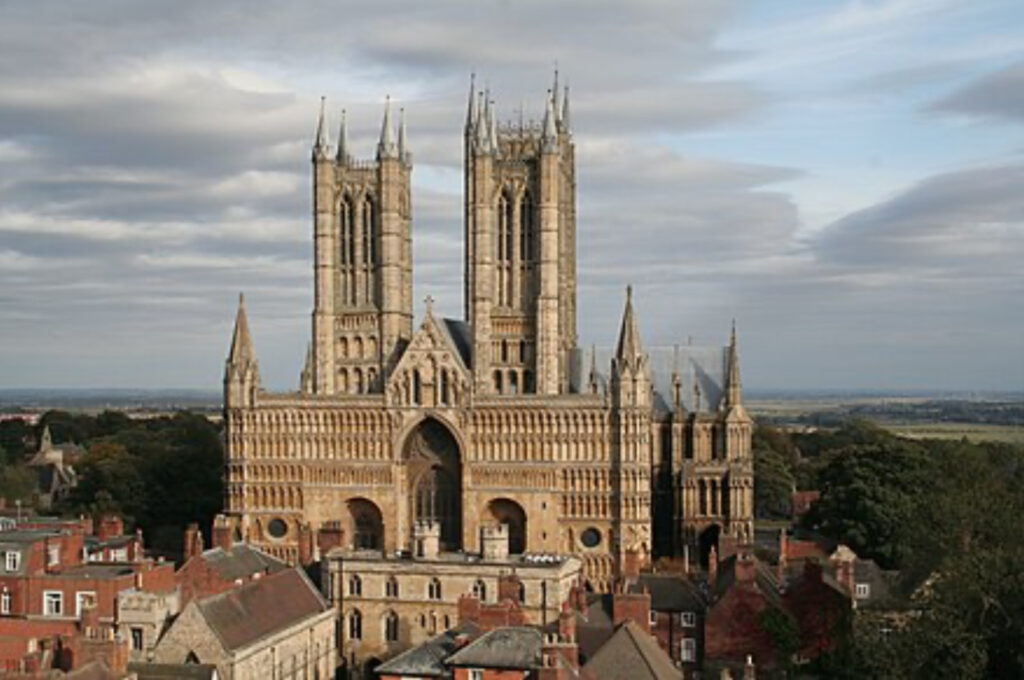
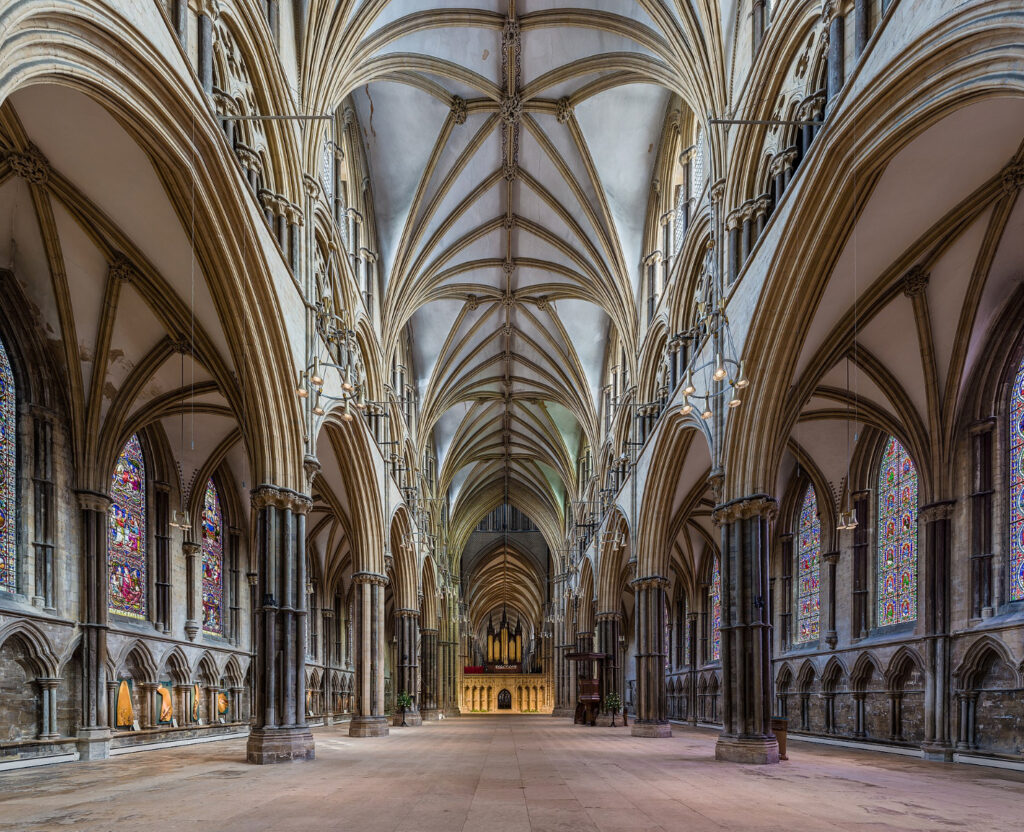
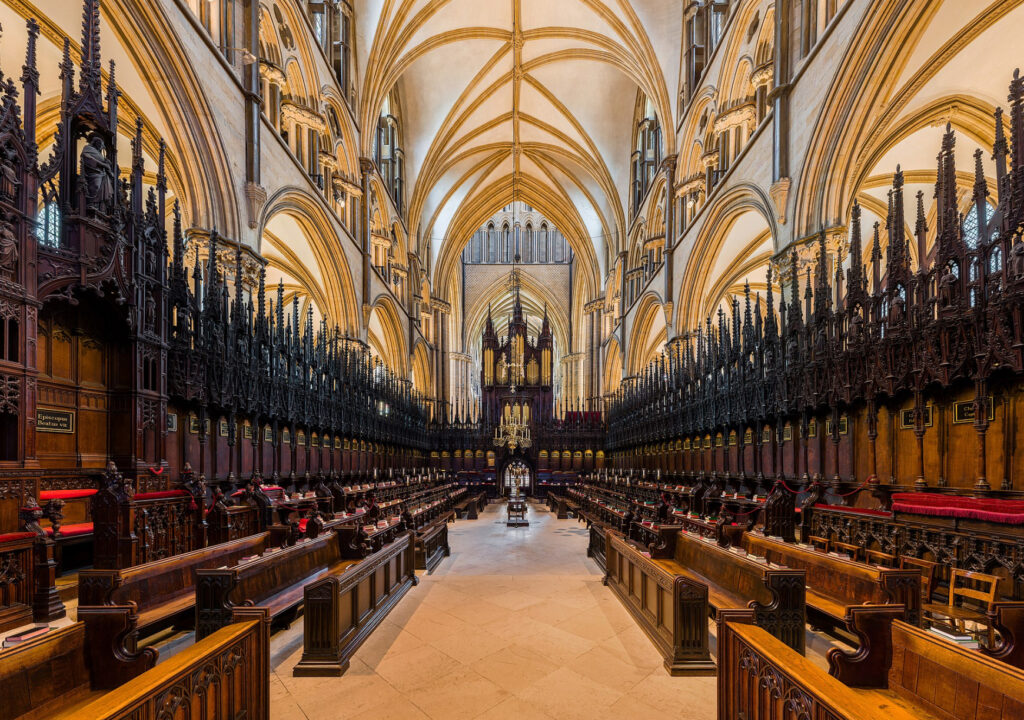

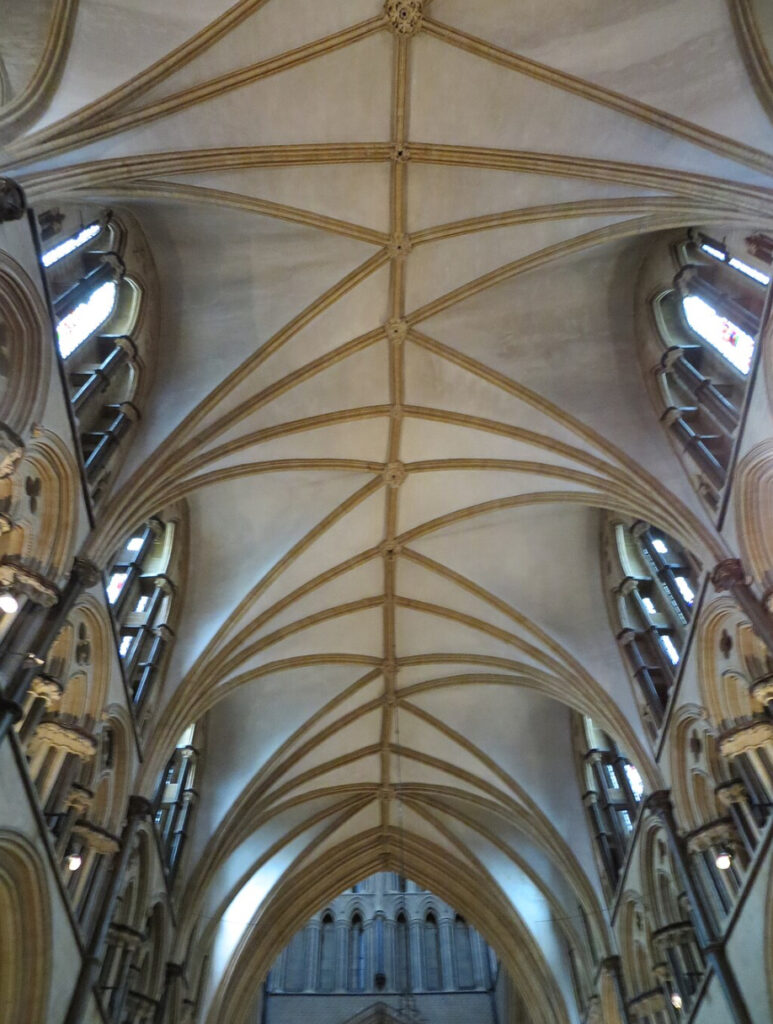
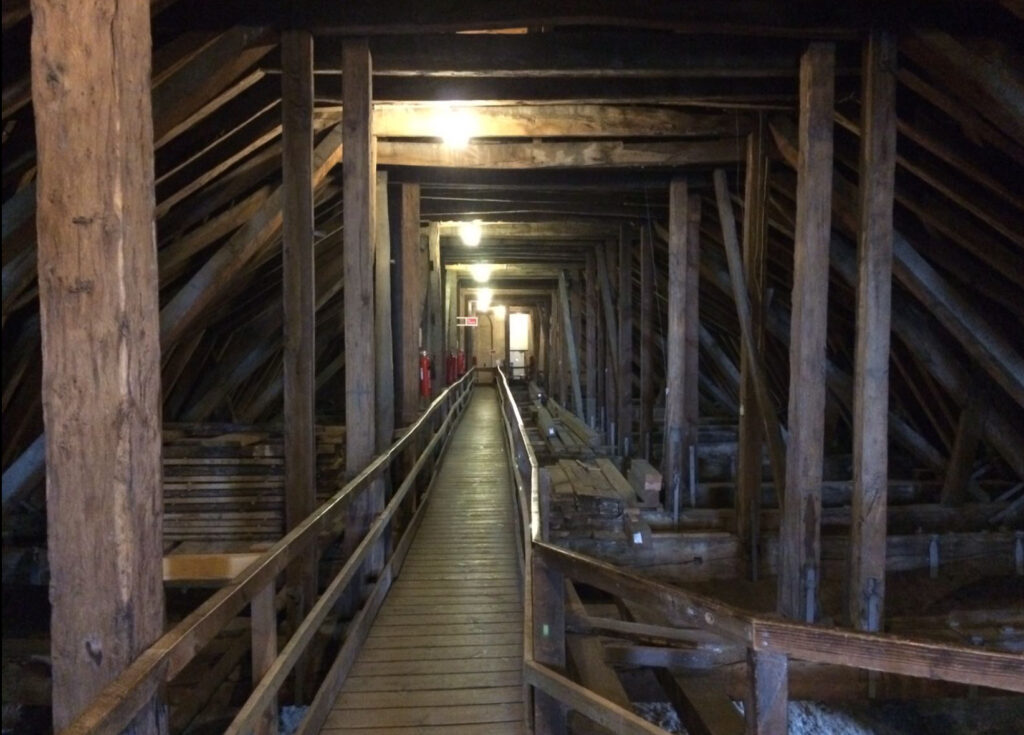
- Lincoln Castle: Built by William the Conqueror in 1068, the castle houses one of the original copies of the Magna Carta and offers fantastic views of the city from its medieval walls. It also features the Victorian Prison, open for visitors.
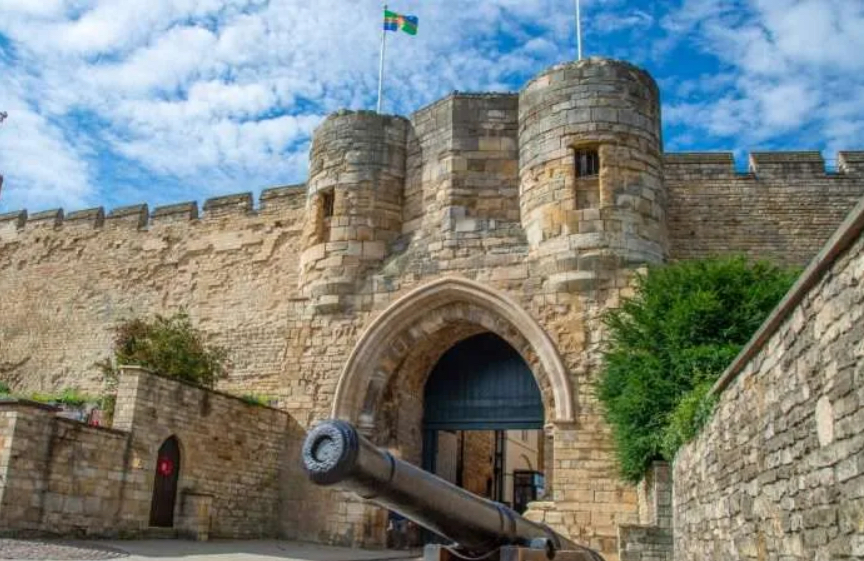
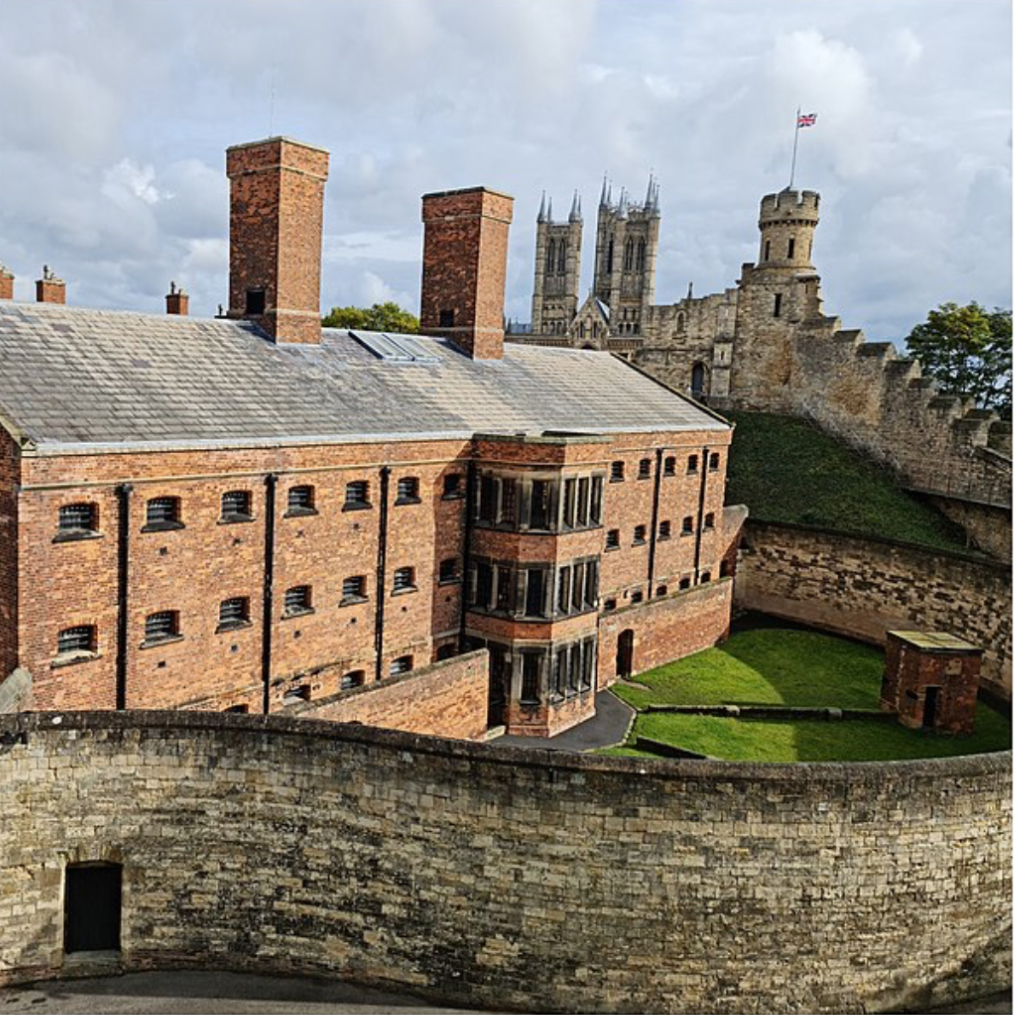
- Steep Hill: A famous, cobbled street connecting the historic uphill area with the city center. Lined with boutique shops, quaint cafés, and historic buildings, it’s a popular attraction for its charm and character.
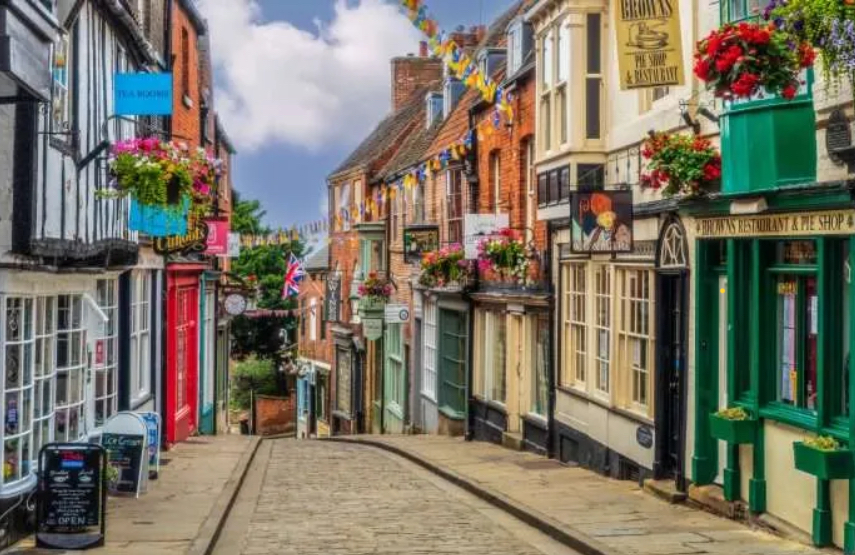
- Bailgate Area: The historic Bailgate area in Lincoln includes many remnants of Roman Lincoln, such as the Newport Arch, one of the oldest Roman gates in the UK still in use. The area also features a mix of independent shops, pubs, and restaurants.
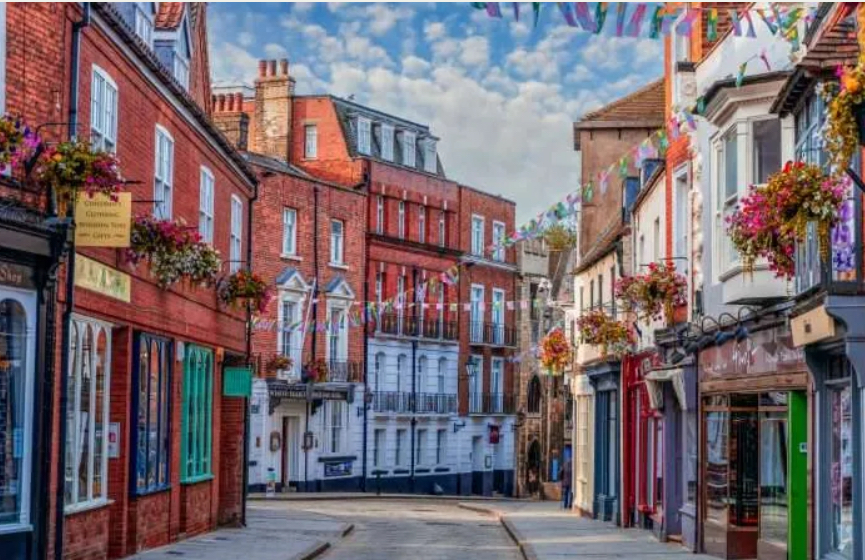
- The Collection and Usher Gallery: This combined museum and gallery exhibit archaeological artifacts from Lincoln’s past, alongside a collection of fine art. It provides a deeper understanding of Lincoln’s historical and artistic heritage.
- Brayford Waterfront: Lincoln’s Brayford Pool is England’s oldest inland harbor, now revitalized as a vibrant waterfront area filled with restaurants, bars, and the opportunity for boat tours, blending historic charm with modern amenities.
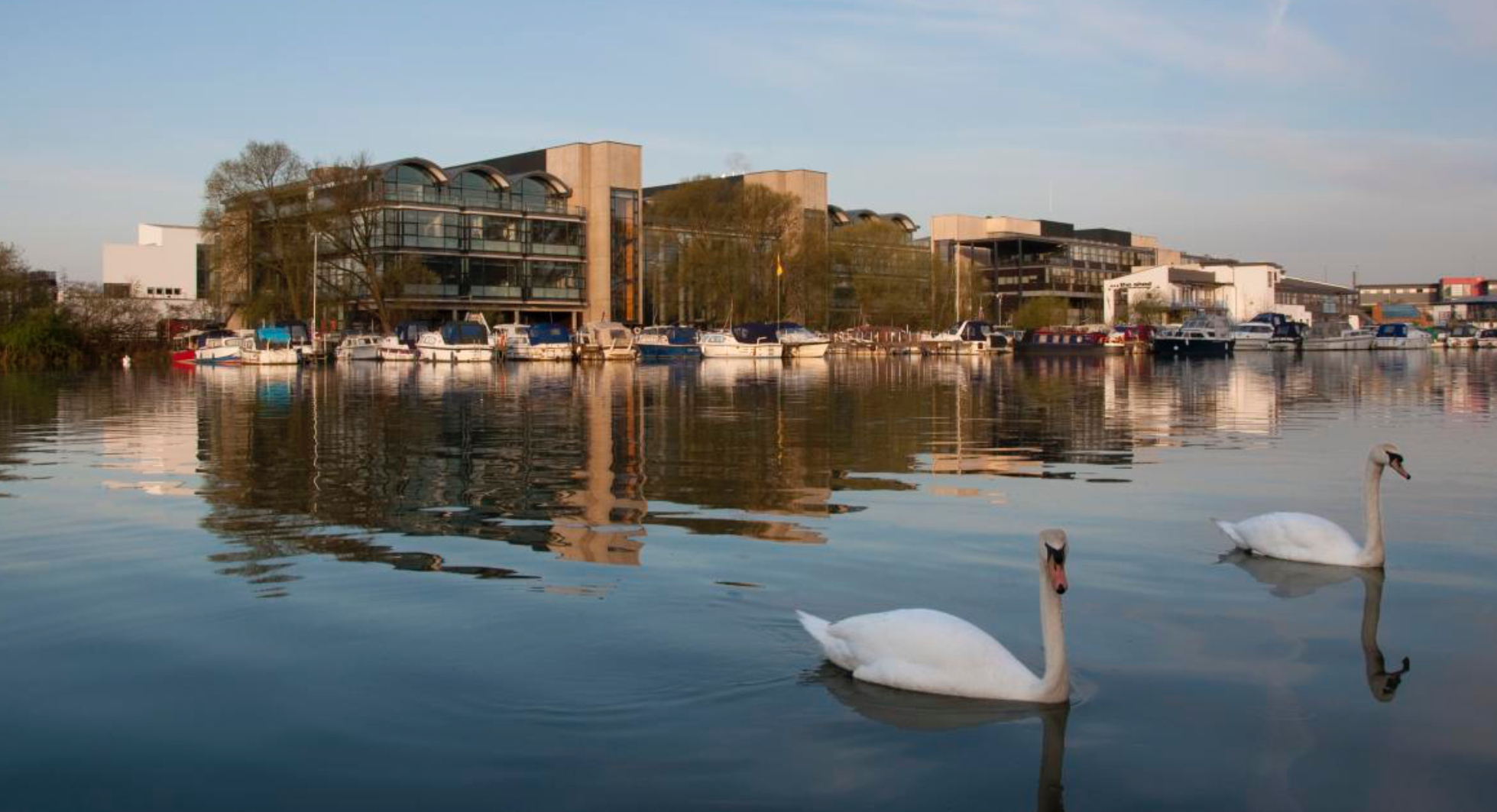
- Roman Remains: Besides the Newport Arch, other Roman remains can be found around the city, including parts of the Roman wall and the remnants of the Roman East Gate.
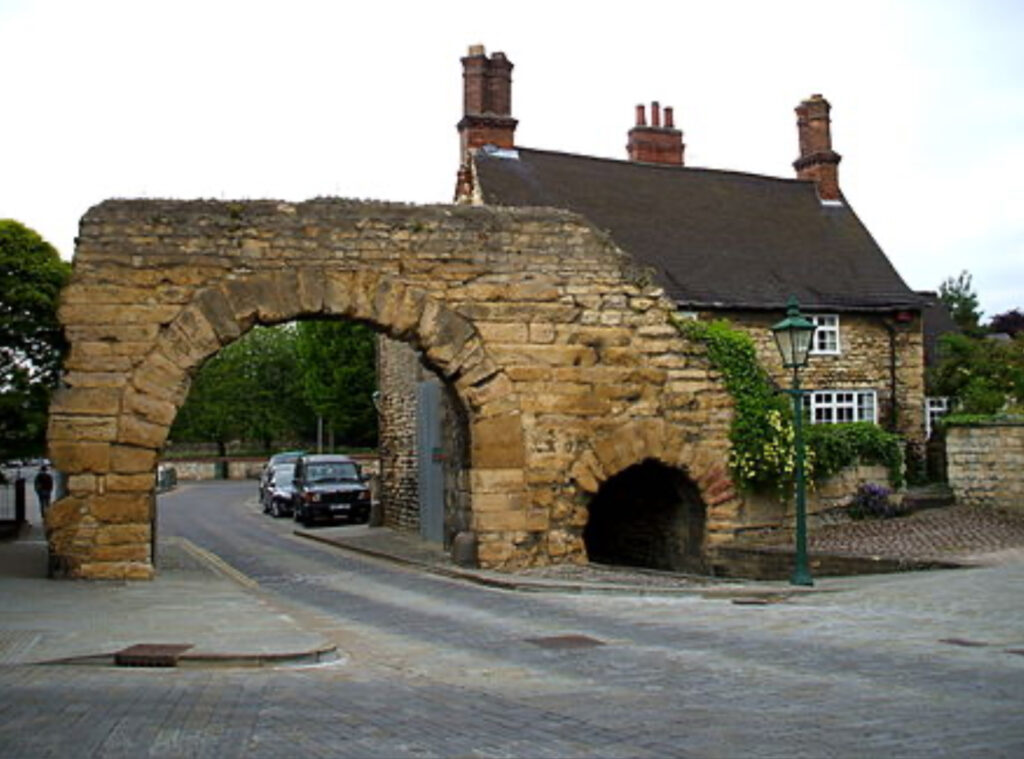
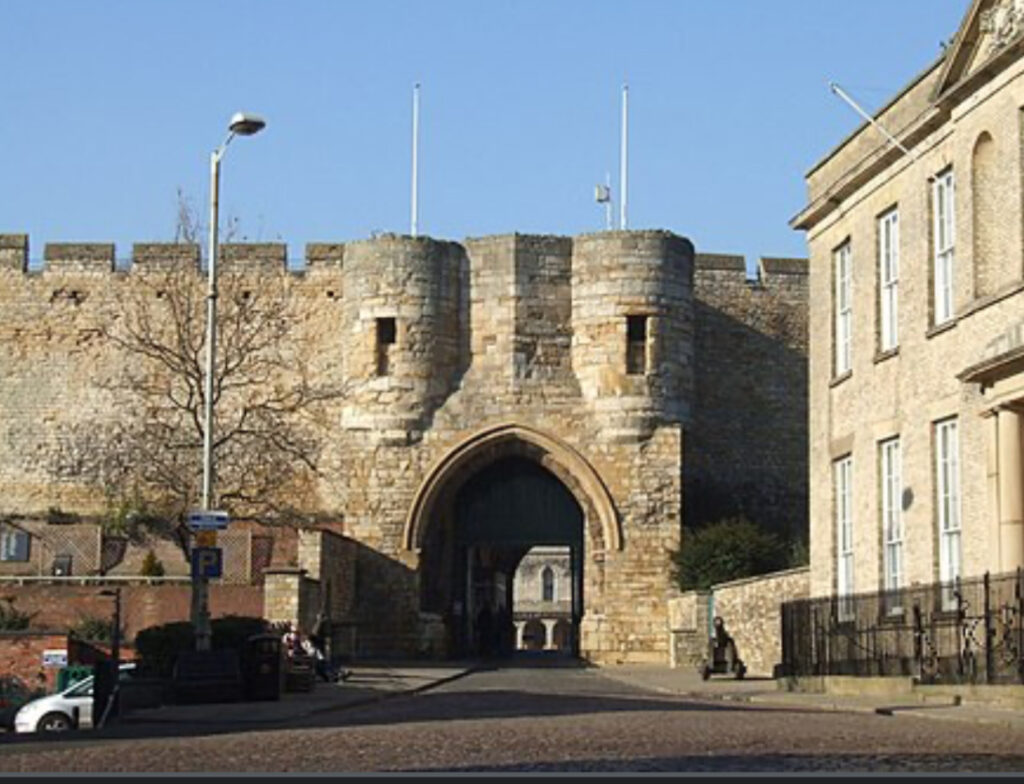
- Jew’s House and Jew’s Court: These are some of the oldest surviving houses in the UK, dating back to the Norman period. They provide a glimpse into Lincoln’s medieval Jewish community, which was once significant in England.
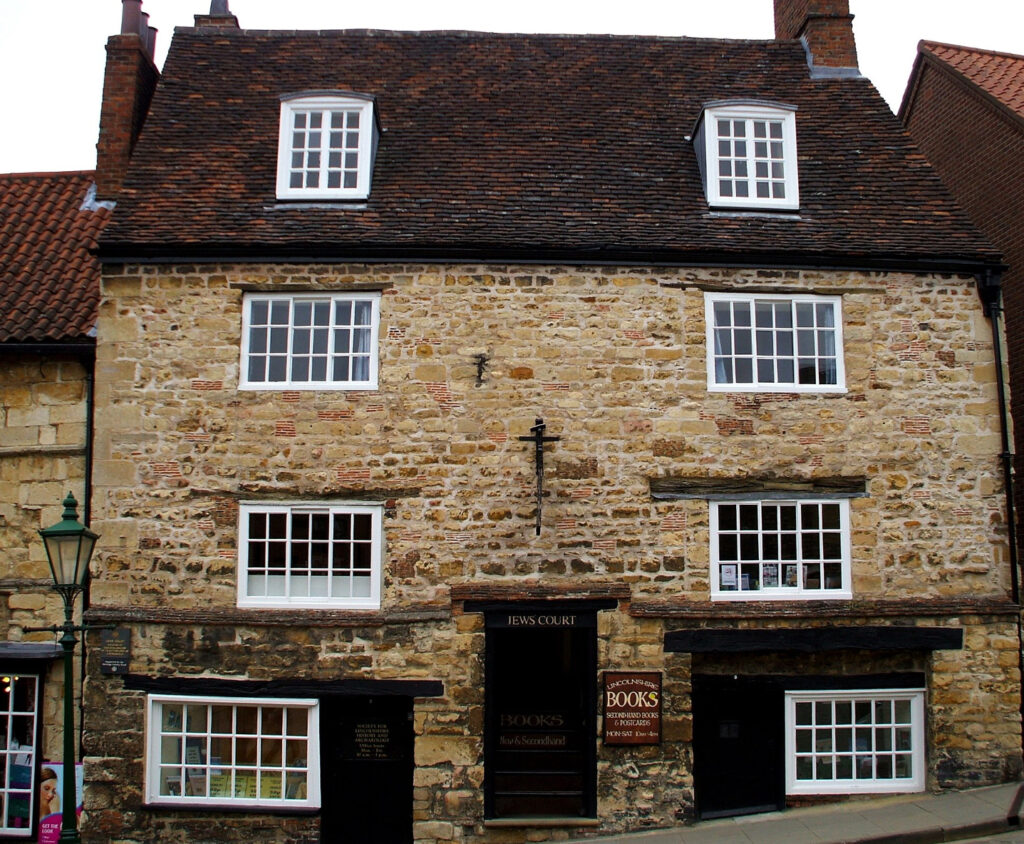
- Medieval Bishop’s Palace: Located near the cathedral, this was once the administrative heart of the Diocese of Lincoln. Though now in ruins, it offers beautiful views and insight into the church’s medieval influence.
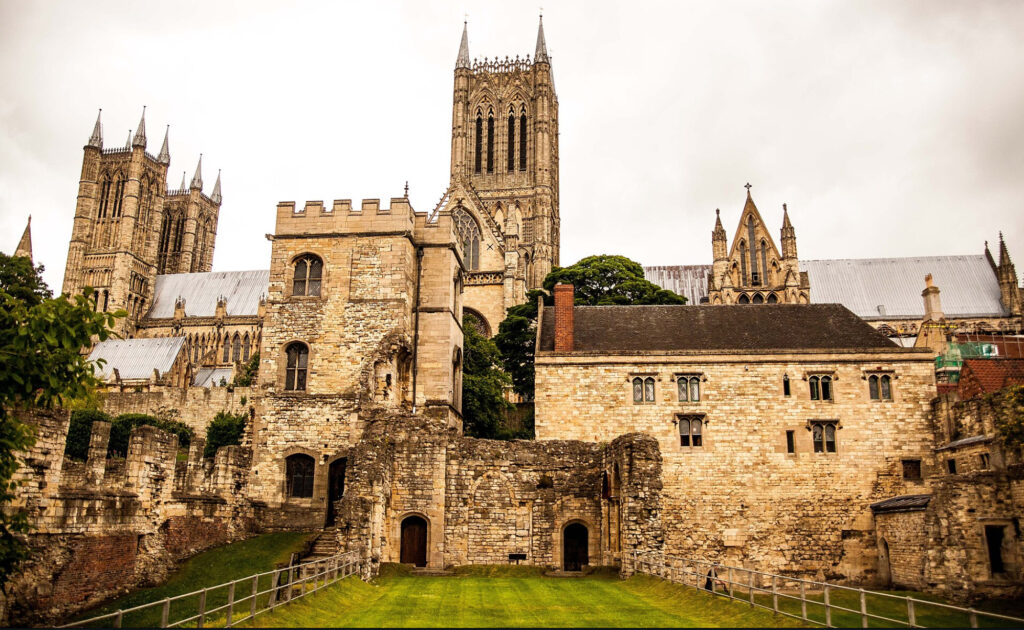
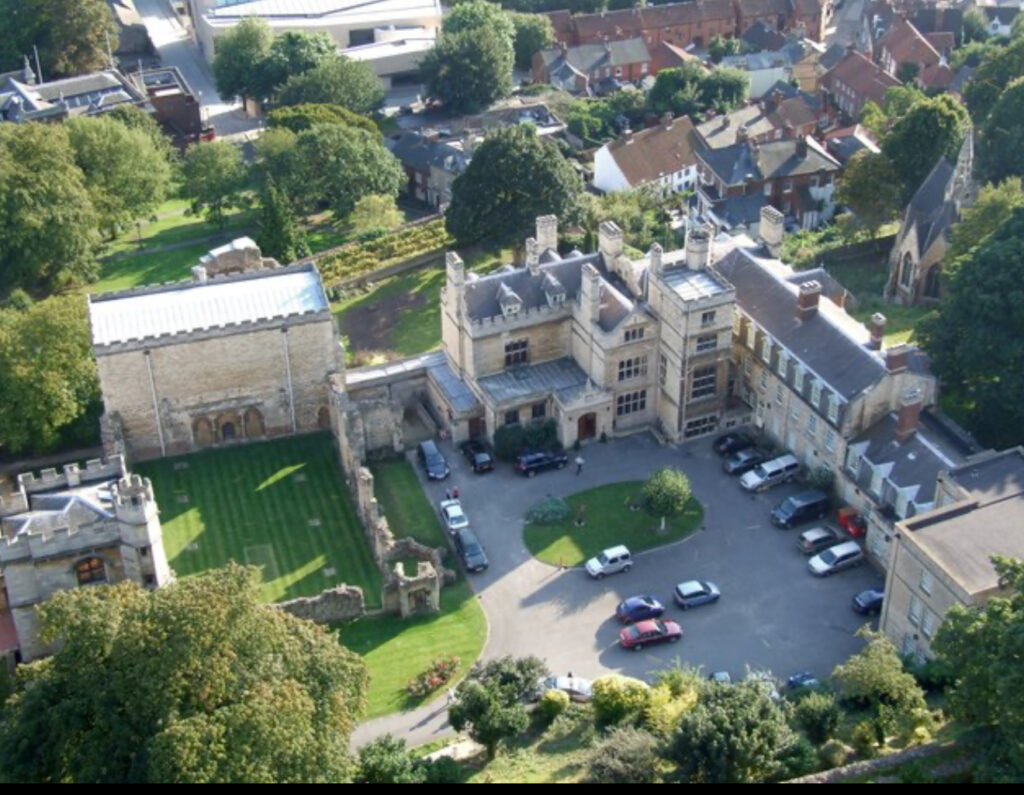
- Lincoln Guildhall and Stonebow: This historic gatehouse, which also serves as Lincoln’s Guildhall, dates from the 15th century and is still used for civic functions. It offers guided tours highlighting the city’s municipal heritage.
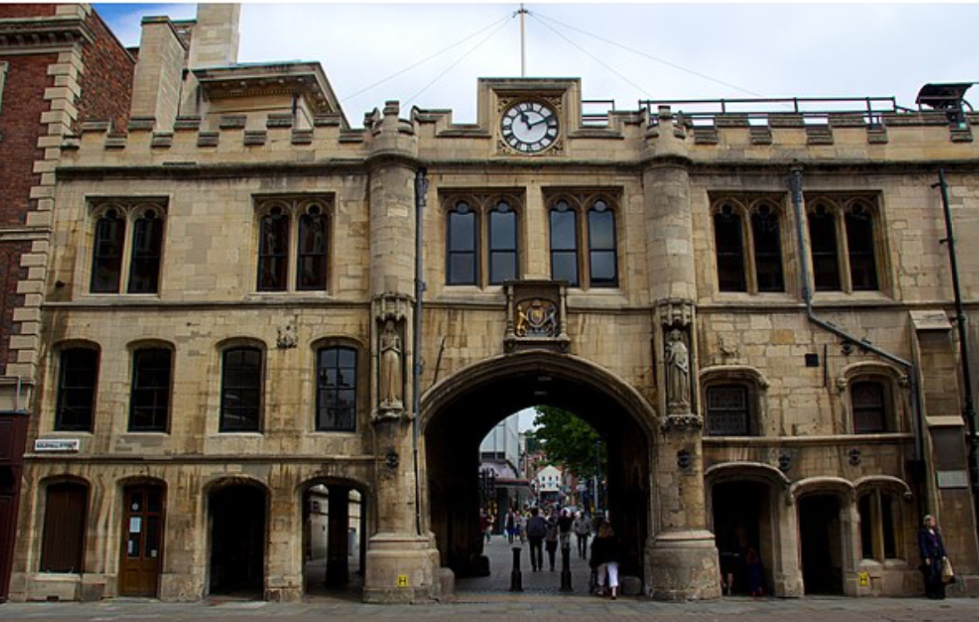
- St. Mary’s Guildhall: This historic guildhall was built in the 12th century and is one of Lincoln’s lesser-known treasures. It showcases medieval architecture and historical exhibitions.
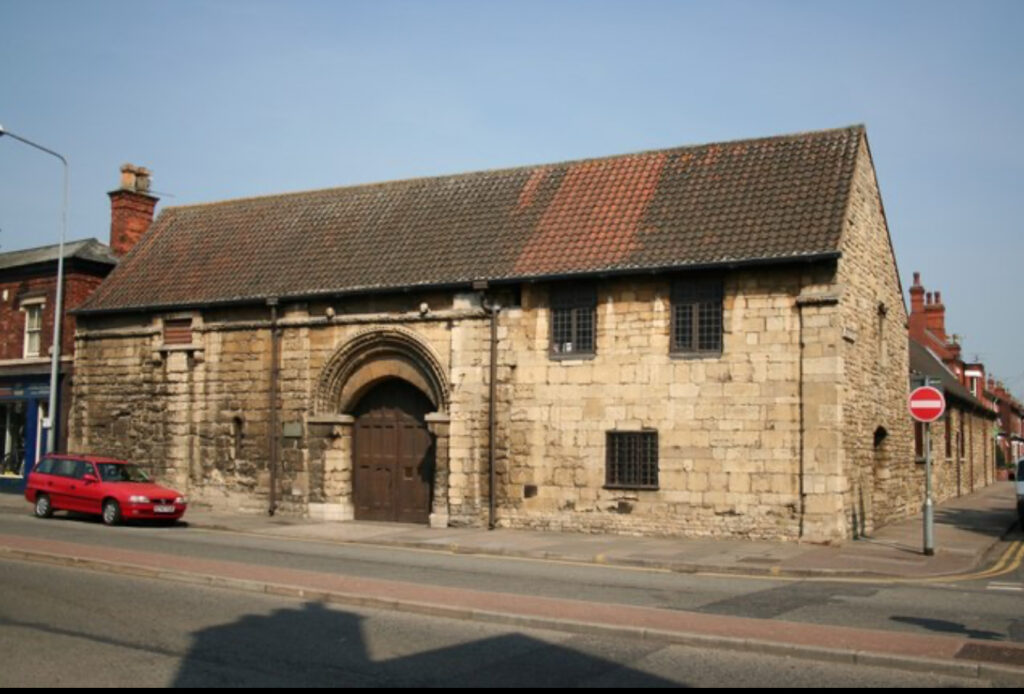
- Museum of Lincolnshire Life: This museum showcases the social history and everyday life of Lincolnshire from the 18th century to the present. It also houses exhibitions about the city’s contribution to agriculture and industry, including early tanks built in Lincoln.
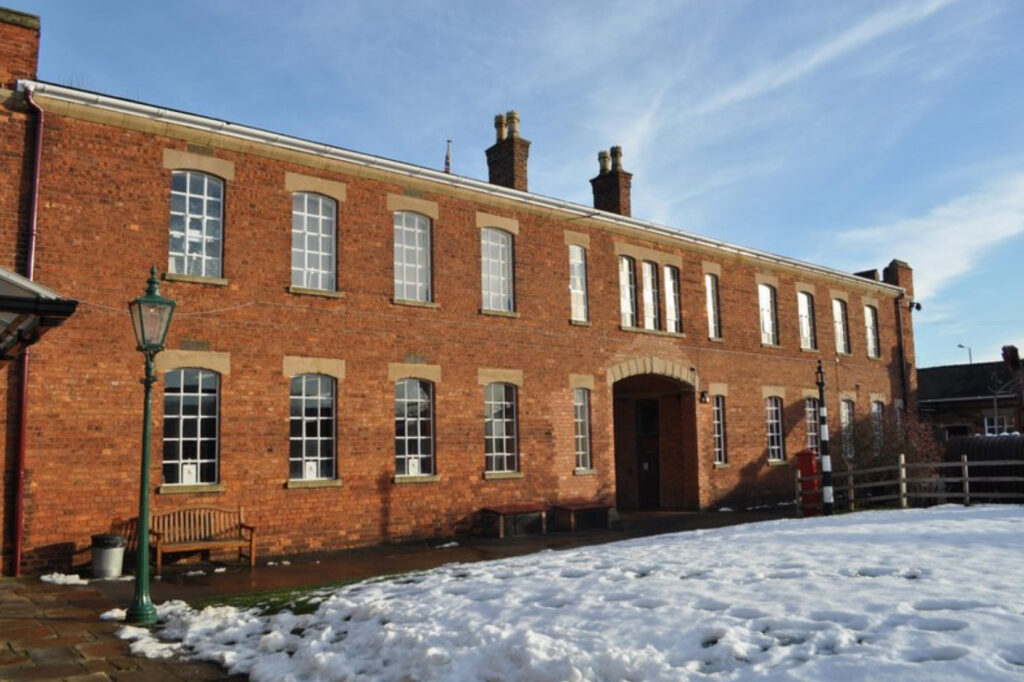
- Ellis Mill: A working 18th-century windmill located in the uphill area of Lincoln, offering a glimpse into the traditional milling industry that was once a common feature of Lincolnshire.
These attractions make Lincoln a fascinating destination for visitors interested in history, from Roman times through the medieval period and into the Industrial Revolution and beyond.
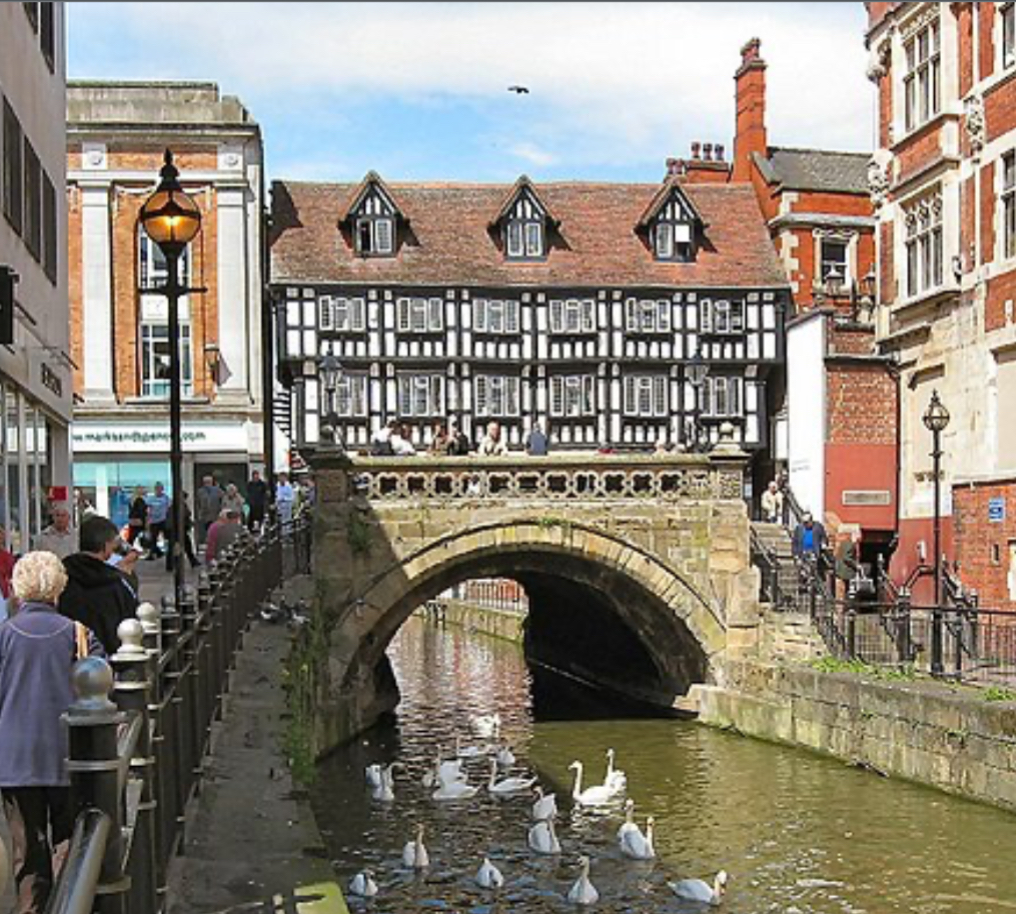
Here’s a one-day itinerary for exploring Lincoln, incorporating the city’s historical highlights and local food specialties:
Morning:
- Start at Lincoln Castle (9:00 AM – 10:30 AM):
Begin your day at Lincoln Castle. Arrive early to explore the grounds, take a walk along the medieval walls, and visit the Magna Carta Vault. Take in panoramic views of the city from the castle walls. - Lincoln Cathedral (10:30 AM – 12:00 PM):
Next, head to Lincoln Cathedral, a short walk from the castle. Explore the stunning architecture and vast interior, including the intricately decorated choir and the magnificent stained-glass windows. - Brunch at Stokes High Bridge Café (12:00 PM – 1:00 PM):
Enjoy a traditional brunch at Stokes High Bridge Café, housed in a charming historic building dating back to the 16th century. Sample local specialties like Lincolnshire sausage, often served in a breakfast or brunch dish.
Afternoon:
- Walk Down Steep Hill (1:00 PM – 1:30 PM):
Make your way down Steep Hill, which is lined with independent shops, bookstores, and artisan stores. Pause at some of the unique shops, and take in the historic ambiance of this cobbled street. - The Collection Museum and Usher Gallery (1:30 PM – 2:30 PM):
Visit The Collection Museum to learn about Lincoln’s archaeological history, or take a stroll through the Usher Gallery, which displays an interesting mix of local art and artifacts. - Lunch at Brown’s Pie Shop (2:30 PM – 3:30 PM):
Stop for lunch at Brown’s Pie Shop, located on Steep Hill. Try their Lincolnshire Plum Bread or a hearty Lincolnshire sausage pie, paired with seasonal vegetables. This cozy spot is perfect for experiencing authentic Lincolnshire comfort food. - Brayford Waterfront (3:45 PM – 4:30 PM):
Head to Brayford Waterfront to enjoy a leisurely afternoon by the water. Walk along the marina, take in the views, and maybe even hop on a short boat tour if available.
Evening:
- Explore the Bailgate Area (4:30 PM – 5:30 PM):
Explore the Bailgate area, known for its historic charm. Take in the Newport Arch, a remnant from Roman times, and enjoy the mix of small shops and old buildings. - Dinner at The Old Bakery (5:45 PM – 7:00 PM):
End your day with a meal at The Old Bakery, which offers modern British cuisine with a focus on local ingredients. Consider dishes featuring Lincoln Red beef or Lincolnshire Poacher cheese, highlighting the region’s culinary traditions. - Evening Stroll by Lincoln Cathedral (7:00 PM – 7:30 PM):
After dinner, take a final stroll around Lincoln Cathedral. The evening lighting provides a different perspective on this iconic landmark, perfect for ending your day on a reflective note.
This itinerary offers a mix of Lincoln’s history, charming streets, and delicious local foods, making the most of your one-day visit to the city.
